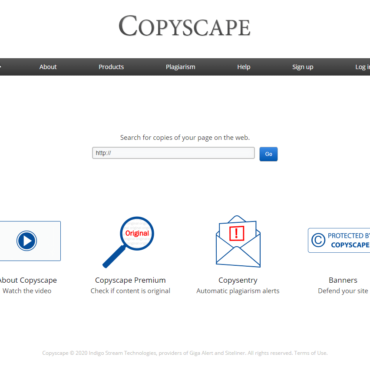Optimizing your pages, blogs, and posts is a very important step towards expanding your viewers’ base and getting more traffic. And the best way to do so is by providing quality content that truly benefits the reader.
To do so, you need to be creative and passionate, but you also need to understand how SEO works and how to write proper titles and add links that attract traffic. Here are some tips on how to do so.
1. Explain the Benefit of Your Article or Topic
Every title should communicate a benefit that your audience will gain when they’re done reading your article. Nobody wants to waste their time, so always ask yourself, “What’s the benefit of the article? Is it engaging? Does it include important information? Will it possibly teach the reader a couple of new things?”
2. Consider the Keywords and Search Engine Traffic
Search engines are going to be the top source of the traffic to your blogs or websites, so you should always look for ways to get higher ranks.
First of all, think about what the potential reader would look up when they’re searching for the topic you’re writing about. Otherwise, you’ll probably miss out on half the traffic that could visit your website.
This is because social media traffic is what comes in when a post is first published, but after that, almost all of the traffic comes from search engines.
3. Keep the Reader Curious
Curiosity is the key to engagement and keeping the reader entertained, consequently reaching the end of your article. However, you should avoid “clickbait” topics or methods which evoke curiosity without actually satisfying it in an effective way.
Don’t give away your answers in the title, but make sure you make them crystal clear in the article.
And when push comes to shove, always choose communication over curiosity as ambiguity can considerably deter readers from your blog or platform.
4. Use Questions
Typically, people search for topics by typing questions into their search engines. That’s why you should always think of the kinds of questions your audience might look up.
You can even use the question as the title for your blog post –as long as you provide a clear and beneficial answer.
5. Divide Your Titles into Two Parts
Sometimes your article is extensive and includes two major pieces of information, and sometimes you want to describe something important that the readers will find in the article, and you want to communicate that.
That’s why dividing your title into two parts using a colon comes in.
6. Utilize “How To”
Many readers will always be interested in learning the know-how of a particular topic –especially if it’s something practical like DIY or step-by-step guides to accomplish a certain task.
These titles also follow the rule of benefit; your readers will know exactly what they’ll gain when they’re done reading that particular post.
You can also use “steps, tips, techniques, guide, rules, hints, or secrets” in your titles to convey the same meaning.
7. Use Numbers or Lists
Studies show that titles that include numbers drive more traffic than their counterparts without numbers.
There isn’t exactly an explanation for it, but some people think it’s because it makes the post feel more manageable and a little easier to navigate.
Lists also make it easier for the person to recap and remember the individual components of the article. It also lets the person know what they’re in for before they click the link.
Smaller numbers show the reader that the post will be a quick read while larger ones indicate a more comprehensive read.
8. Draw Comparisons between Things
People often look up the differences between products when they’re shopping for things or when they’re trying to decide on a service to use.
Whatever it is that you’re writing about, there should be many ways through which you can draw comparisons between products, techniques, or opinions.
If you’re comparing things, you should make that clear in the title to get more traffic from people facing the particular choice in question.
Finally, make sure your post delivers a final answer regarding which option is the superior one.
9. Address Your Audience in the Headline
Instead of saying something generic like “10 Fun DIY Projects”, use “10 DIY Projects that You Could Do for Fun.”
Or you could tailor the title to a specific target audience. For example, “10 Fun DIY Projects for Beginners.” While this may reduce potential audience size as more advanced DIY-ers won’t click the link, it compels beginners to click your link.
10. User Power Words
Using rich vocabulary makes your article more passionate and appealing. Instead of simply describing something as “good” or “great” go for “superb” or “fantastic.”
Other words that catch any reader’s attention would be “free, secrets, mistakes, and easy.”
However, you should use this with care as some words can trigger spam filters. The words “free” or “discount” can often be sent to the Promotions tab in Gmail rather than to the main inbox.
Moreover, it really helps if you use “Essential Guide” or “Secrets Every DIYer Should Know,” for example.
Final Thoughts
Whatever technique you go for when you’re writing your articles, keep their length in mind. For both search engines and social media, it’s better if you keep them relatively short and clear.
It’s also recommended to have a more practical title for search engines and a more engaging or aspirational one for social media.
Put some effort into crafting your titles, and it’ll surely pay back. Your article’s titles are like an applicant’s CV –they would never be recognized and get a call if they don’t know how to attract attention and convey a positive message.







